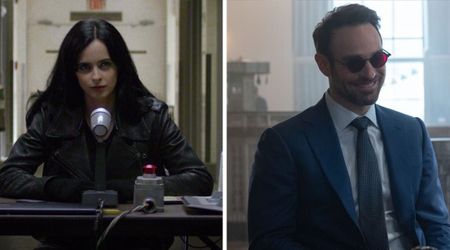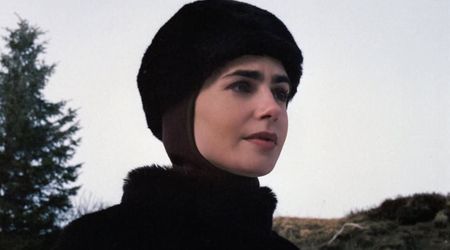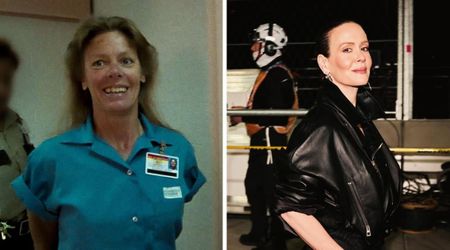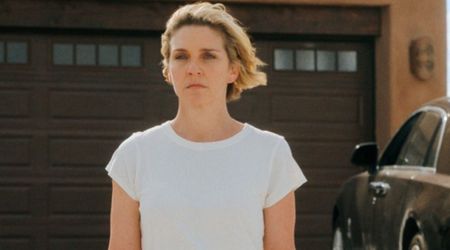'The Lord of the Rings: The Rings of Power': How Sundering Seas came to life in prequel saga

LOS ANGELES, CALIFORNIA: The excitement of the fans is now as high as it has ever been. We are just days away from the worldwide preview of the highly anticipated historical fantasy war prequel 'The Lord of the Rings: The Rings of Power'. The series will air on Amazon Prime Video for viewers around the world on September 2, 2022. In an interview, Ron Ames, who is responsible for the visual effects, revealed how the magnificent Sundering Seas were created for the prequel series.
In a behind-the-scenes interview with Collider, visual effects supervisor Ron Ames spoke about the significance of Galadriel's (Morfydd Clark) journey to Middle Earth. Ames, who focused on how the seas of Arda were created from scratch for the series, revealed that the prep time for the seas originally took about three to four weeks. This was done not only to ensure the safety of the actors during the process but also to make sure the waves looked realistically strong. The trick, apparently, was to film the entire sequence, which consisted of 195 different shots, over a period of another three weeks in two water tanks, one of which was built outdoors and could hold 2.5 million liters of water at its deepest point, while the other was a smaller immersion tank with a capacity of 1.2 million liters and a maximum depth of 16 feet.
RELATED ARTICLES
‘The Lord of the Rings: The Rings of Power’: Bear McCreary reveals he composed 9 hours of music in 8 months for prequel series
Interestingly, the sequence about Galadriel's (Morfydd Clark) journey through Middle Earth, in which she discovers the seas of Arda but is unfortunately left with a human named Halbrand (Charlie Vickers) after the two are stranded during a violent storm, takes place early in the first season, beginning in Episode 1 and continuing through much of Episode 2.
According to Ames, the ratio between what visual cinematography has been created practically and virtually from scratch for The Sundering Seas is about 50/50. Industrial Light and Magic, one of the many VFX teams tasked with designing the series' graphics and special effects, embedded and developed their techniques from what could be found in the real world to enrich the scope of the vast and magnificent Sundering Seas on the screens. With a detailed explanation, Ames adds, “We went out both with a marine unit and helicopters and shot ocean plates, because New Zealand, their coastline is so gorgeous and beautiful. So we had really good reference, and in some cases, we used the actual water.” It is this footage that was merged with what Bayona was able to visually capture in the tank, which proved to be a difficult connection, but is definitely exactly what Ames describes as visually "fantastic" in the final product.
The series has been re-imagined by showrunners JD Payne and Patrick Mckay for Prime Video. The series is based on late author JRR Tolkien’s iconic book ‘The Lord of the Rings' and its appendices. Apart from Morfydd Clark (Galadriel) and Charlie Vickers (Halbrand), ‘The Lord of the Rings: The Rings of Power’ also has an ensemble and apt starcast comprising noted actors like Benjamin Walker (Gil-galad), Robert Aramayo (Elrond), Trystan Gravelle (Pharazon), Megan Richards (Poppy Proudfellow), Sara Zwangobani (Marigold Brandyfoot), Owain Arthur (Prince Durin IV), Charles Edwards (Celebrimbor), Daniel Weyman (The Stranger), Maxim Baldry (Isildur), Ismael Cruz Cordova (Arondir), Ema Horvath (Eärien), Cynthia Addai-Robinson (Queen Regent Míriel), Nazanin Boniadi (Bronwyn), Lenny Henry (Sadoc Burrows), Markella Kavenagh (Elanor 'Nori' Brandyfoot), Tyroe Muhafidin (Theo), Sophia Nomvete (Princess Disa), Lloyd Owen (Elendil), Dylan Smith (Largo Brandyfoot), and Leon Wadham (Kemen).










